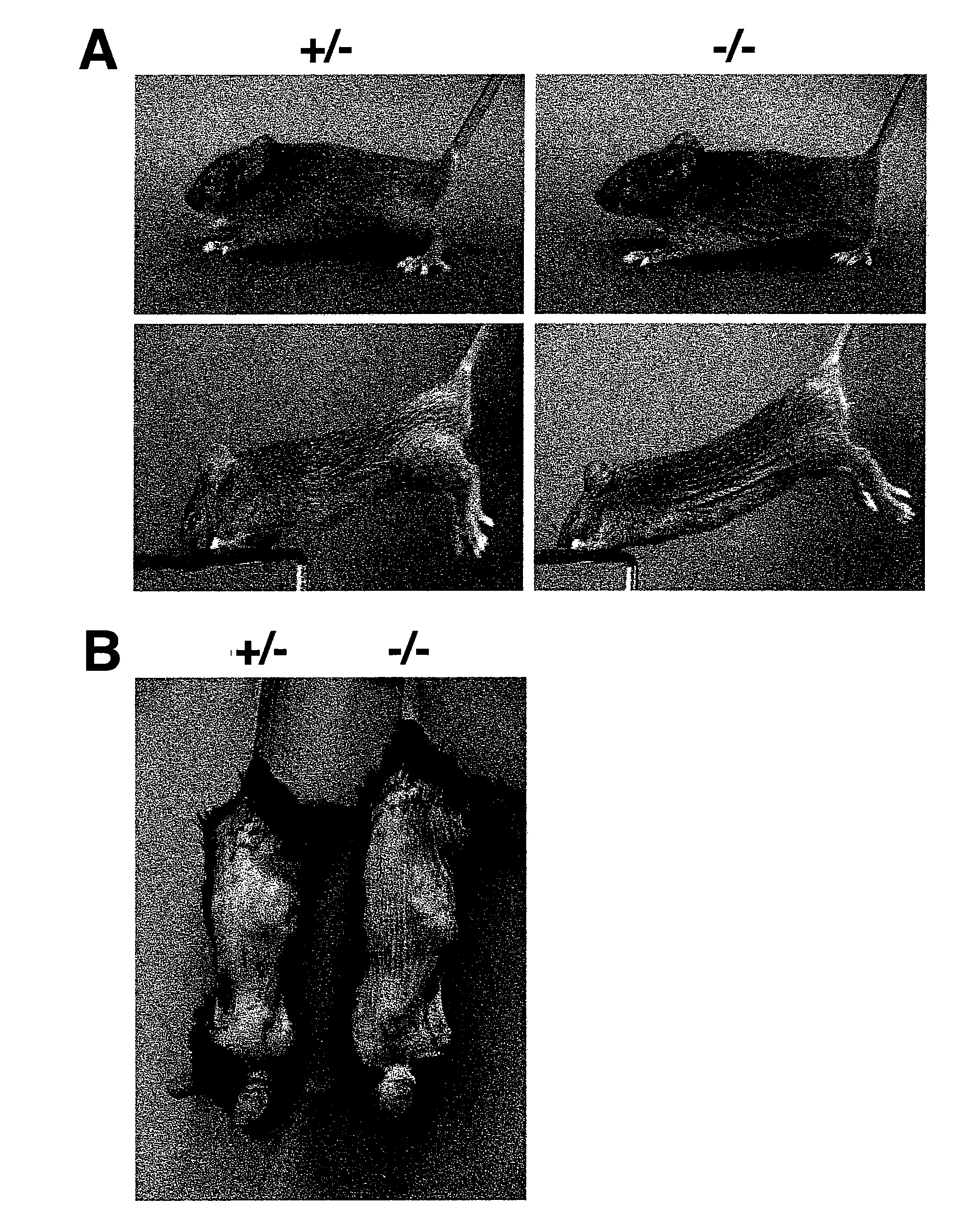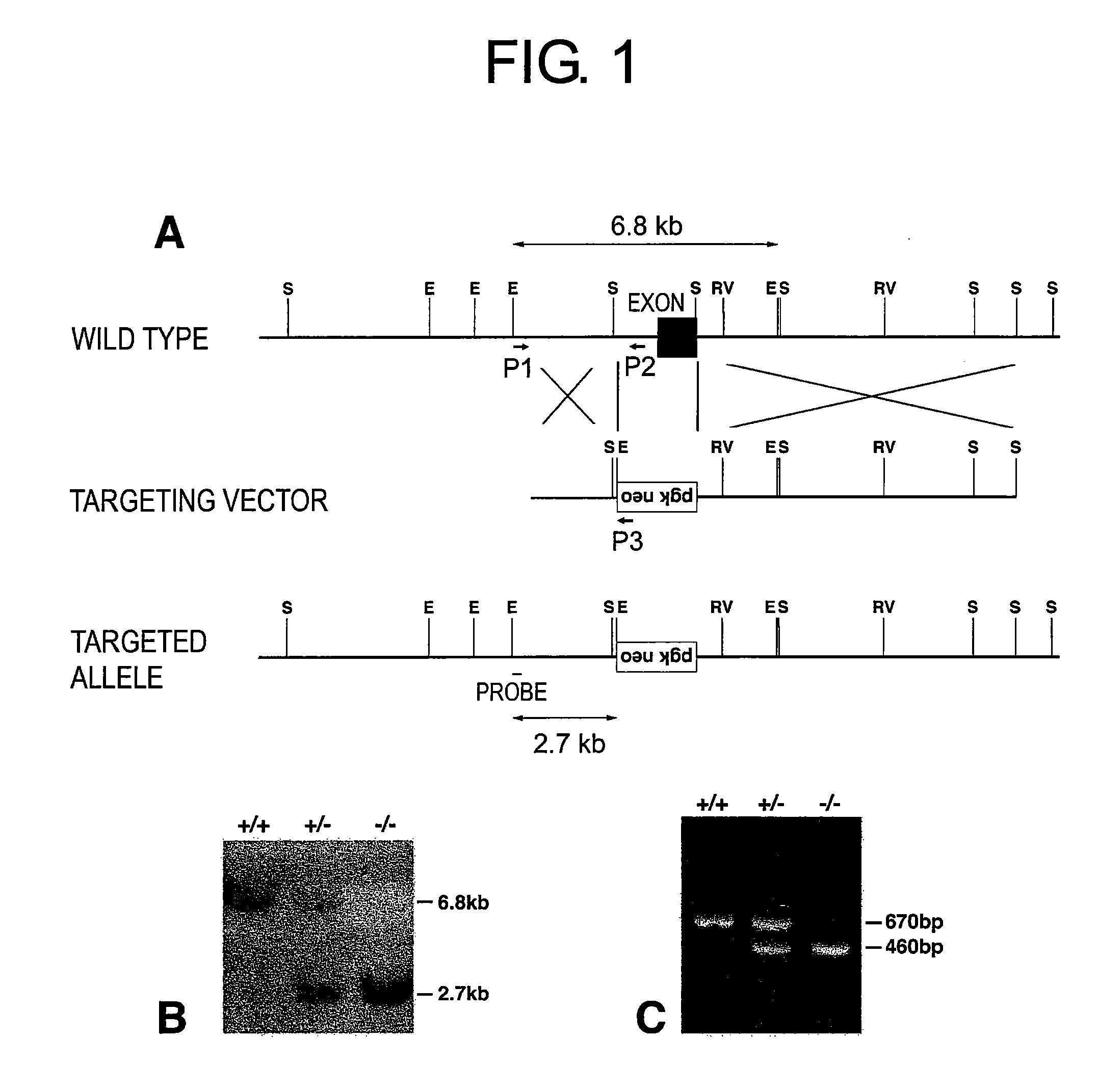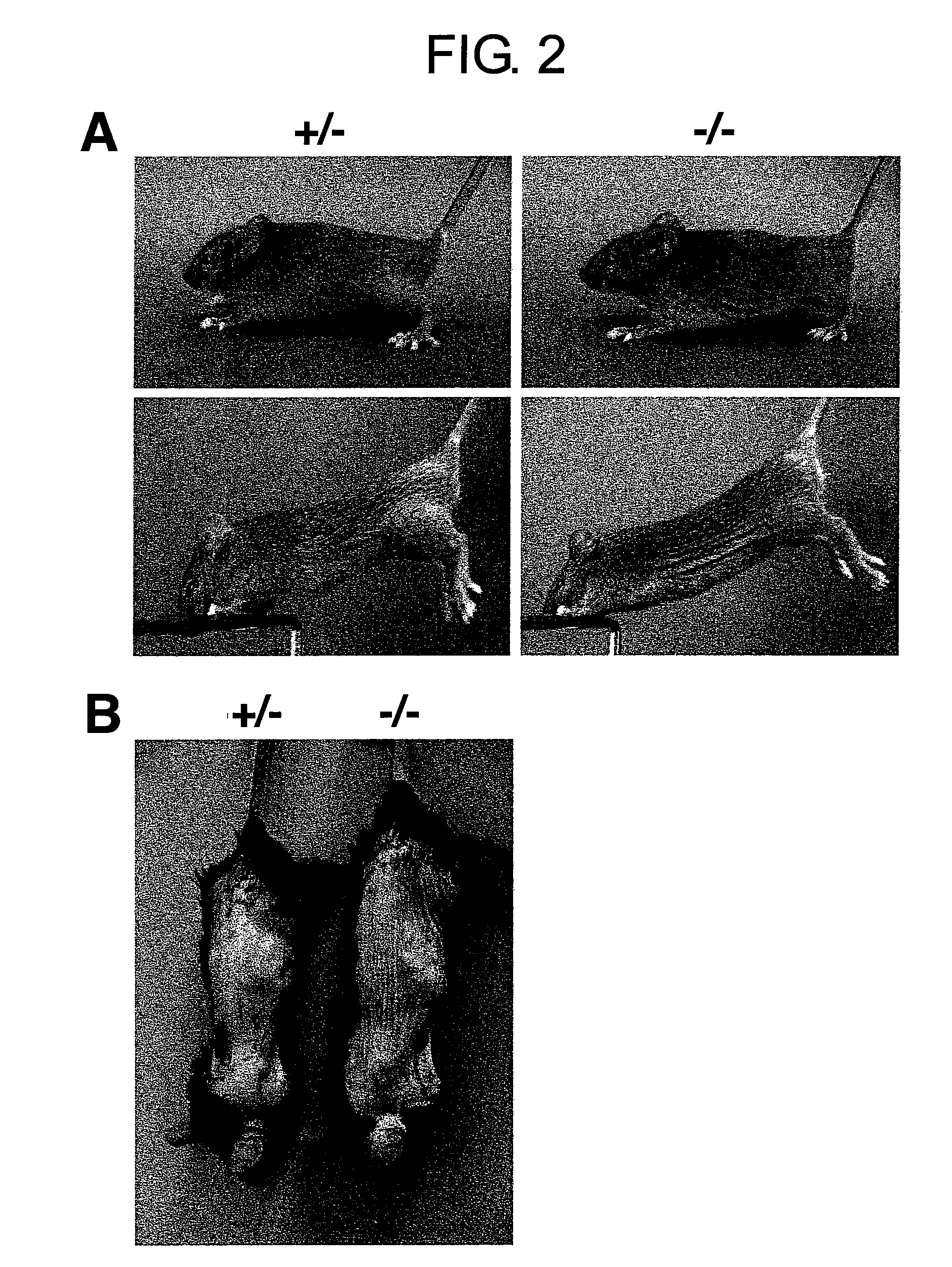Saspase knockout animal
a technology of saspase and animal, which is applied in the field of nonhuman animals, can solve the problems that its function in the epidermis has yet to be determined, and achieve the effects of reducing wrinkles and/or sags, confirming the effectiveness of a saspase inhibitor, and confirming activity
- Summary
- Abstract
- Description
- Claims
- Application Information
AI Technical Summary
Benefits of technology
Problems solved by technology
Method used
Image
Examples
example 1
[0069]Public genome databases were searched based on the nucleotide sequence of the mouse SASPase gene described in SEQ ID NO: 1 to design primers for amplifying the 5′ side 2.2 Kb and 3′ side 7.7 Kb genomic regions of the mouse SASPase gene. These primers were then used to isolate the 5′ side and 3′ side genomic regions of the SASPase gene from the 129SVJ mouse genome by genomic PCR.
example 2
Construction of a Targeting Vector
[0070]A targeting vector was produced in which the neomycin resistance gene containing a promoter was located between the 5′ side and 3′ side homologous regions relative to the exon of the SASPase gene.
[0071]Genomic DNA clones containing the 5′ side homologous region were subjected to blunting. Genomic DNA clones containing the 3′ side homologous region were cleaved at the SalI and ApaI sites, which were present within the PCR primer. A blunting site and SalI and ApaI cleavage sites were respectively produced in turn on both sides of the neomycin resistance gene in pBluescript™ SK(−) into which the gene had been inserted, and the 5′ side and 3′ side homologous regions were introduced into the resulting vector to ultimately produce the targeting vector (FIG. 1).
example 3
Acquisition of ES Cells that have Undergone Homologous Recombination
[0072]The targeting vector was cleaved with NotI to obtain a linear DNA (1 mg / ml). Electroporation into ES cells was carried out by Kurabo Industries, Ltd. DNAs were extracted from a portion of the resulting ES cell colonies, and clones that had undergone homologous recombination were identified by Southern blot analysis. Southern blot analysis was carried out by using as a probe a genomic DNA of the 5′ side of the portion that is not contained in the targeting vector, and then a 2.7 Kb DNA fragment was detected in clones with homologous recombination relative to a 6.8 Kb in the wild type.
PUM
 Login to View More
Login to View More Abstract
Description
Claims
Application Information
 Login to View More
Login to View More - R&D
- Intellectual Property
- Life Sciences
- Materials
- Tech Scout
- Unparalleled Data Quality
- Higher Quality Content
- 60% Fewer Hallucinations
Browse by: Latest US Patents, China's latest patents, Technical Efficacy Thesaurus, Application Domain, Technology Topic, Popular Technical Reports.
© 2025 PatSnap. All rights reserved.Legal|Privacy policy|Modern Slavery Act Transparency Statement|Sitemap|About US| Contact US: help@patsnap.com



